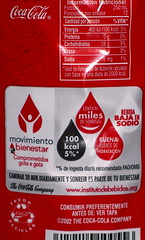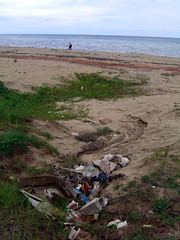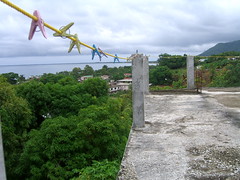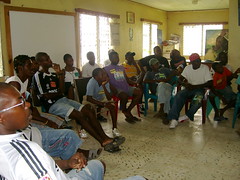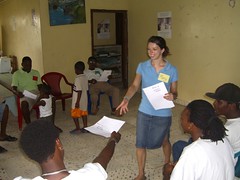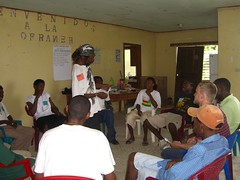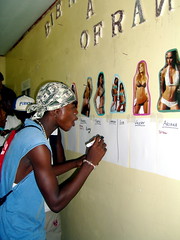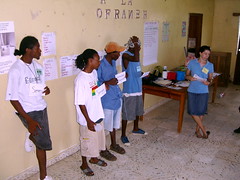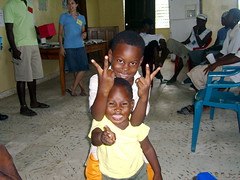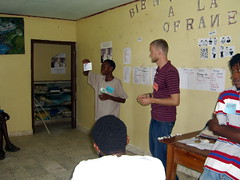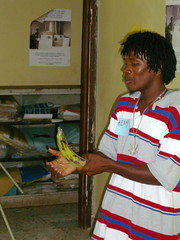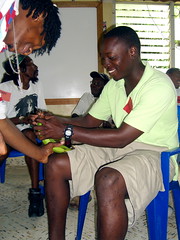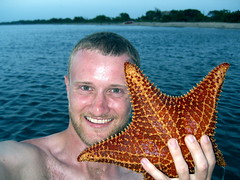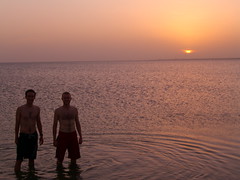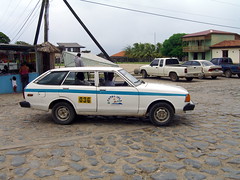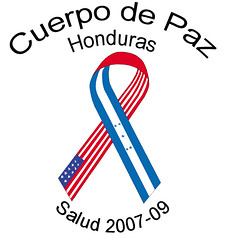The Three Goals of Peace Corps
- To help the people of interested countries and areas in meeting their needs for trained workers;
- To help promote a better understanding of Americans on the part of the peoples served;
- To help promote a better understanding of other peoples on the part of Americans.
The Twin Goals of the Health Project- HIV/AIDS Prevention
- Child Survival
The Health Project of Peace Corps Honduras has two main goals: Child Survival (decreasing infant/child mortality and by extension maternal mortality as well) and HIV/AIDS prevention (preventing new cases of HIV and preventing existing cases of HIV from advancing to AIDS). When I arrived in Trujillo, I wanted to get a sense of what the public health situation was as it relates to these two goals. Doing so might help me prioritize certain projects, but more than that, it would allow me to increase your understanding (Peace Corps goal #3) of the public health challenges facing Trujillo, the Department of Colón, and Honduras in general.
Goal #1: HIV/AIDS PreventionRight now, there are approximately 1,200,000 people living with HIV in the United States. That is about 0.6% of the population. In Honduras, there are at least 63,000 people living with HIV, or about 1.5% percent of the population. That's nearly triple the rate of the U.S., and is probably more due to chronic underreporting of cases. Unfortunately, I haven't been able to get data about people living with HIV in Colón or Trujillo, but if I can find the data, I'll post an update.
| People Living with HIV/AIDS | Average New Cases of HIV Per Year (2004 – 2006) | % Of HIV Cases Receiving ARV Therapy | Condom Use |
| USA | 1,200,000 (0.6%) | 14 per 100,000 People | 70.1% | 15.7% |
| Honduras | 63,000 (1.5%) |
| 35.0% | 5.0% |
| Colón |
| 26 per 10,000 People |
| 7.5% |
| Trujillo |
| 34 per 10,000 People |
|
|
From 2004-2006, there was an average of 14 new cases of HIV per 100,000 people in the U.S. In Colon and Trujillo (and probably Honduras overall, but I couldn't find the data) the rate is an order of magnitude greater: 26 per 10,000 people in Colón, and 34 per 10,000 people in Trujillo.
According to UNAIDS, 70.1% of HIV cases in the U.S. are receiving Anti-Retroviral (ARV) therapy. It's half that rate in Honduras, only 35%.
What about prevention? If one is sexually active, the best way to reduce the risk of infection is by using a condom each and every time one has sex. In the United States, the percentage of sexually active adults who reported using a condom every time they have sex was 15.7%. (Note, this survey interviewed both single and coupled people.) In Honduras, that rate is less than a third of the U.S., only 5%. Colón actually has the highest rate of condom use among all departments, at 7.5%.
A few years ago, Honduras passed La Ley Especial de VIH/SIDA (The Special HIV/AIDS Law) guaranteeing rights for people living with HIV, explicitly outlawing discrimination, mandating free and low cost confidential testing at health centers, and also recommending that health professionals encourage all pregnant women to get tested for HIV. In Colón, pregnant women have made up an increasing percentage of the new cases of HIV, from 11% in 2003 to 28.3% in 2006. This increase could be due to the increased efforts to detect HIV in pregnant women, or it could be for other reasons (for example, unfaithful husbands infecting their wives).
Number of New Cases that are Pregnant Women (% of Total New Cases)
| 2003 | 2004 | 2005 | 2006 |
| Colón | 11 (11%) | 18 (22.5%) | 12 (23%) | 15 (28.3%) |
Goal #2: Child SurvivalInfant and Child Mortality is one of the best indicators of the overall state of public health in a country. One reason why is because so many factors influence the health of a child: nutrition, water and sanitation infrastructure, education and health of the parents, and access to prenatal care, to name a few.
| Neonatal Mortality | Infant Mortality | Childhood Mortality |
| USA | 4.6 (2003) | 6.9 (2003) |
|
| Honduras | 18 | 29 | 37 |
| Colón | 13 | 27 | 37 |
| Trujillo | 17 |
|
|
Neonatal Mortality refers to death within the first month after birth. Infant Mortality is death within the first year, and Childhood Mortality is death before the fifth birthday. In the U.S. Neonatal Mortality is at about 4.6 deaths per 1,000 live births. Infant Mortality is 6.9 deaths per 1,000 live births. In Honduras the rates are much higher: Neonatal Mortality of 18 per 1,000 live births, and Infant Mortality of 27 per 1,000 live births. But the most alarming statistic is childhood mortality: 37 per 1,000 live births. Stated another way, 1 in every 25 babies don't live to see their fifth birthday.
| Diarrhea | Pneumonia |
| <1 Year Old | 1-4 Years Old | <1 Year Old | 1-4 Years Old |
| USA | 0.97% |
|
|
| Colón | 2477 (33%) | 4314 (13%) | 827 (11%) | 1353 (4%) |
| Trujillo | 405 (28%) | 797 (13%) | 76 (5%) | 181 (3%) |
Of course, just because a child lives doesn't mean he is healthy. A variety of ailments affect Honduran children, most common among them Diarrhea and Respiratory Infections. In the U.S., fewer than 1% of kids under the age of 5 are brought to hospitals or clinics because of diarrhea. The only statistics I could find on childhood pneumonia or respiratory infections in the U.S. are from the 1930's, probably because the rate is so low that it's not even on the public health radar anymore. Here in Trujillo, and in Colón, that's not the case at all. In Colón, 33% of infants and 13% of children aged 1-4 are brought to hospitals or clinics for diarrhea. The rates are almost the same in Trujillo. 11% of infants in Colón are seen for pneumonia or severe respiratory infections. The rate is lower in Trujillo, but still high (5% or 1 in every 20 infants).

Malnutrition is also a significant problem among children. I'm fond of showing this graphic at diarrhea prevention classes about the relationship between diarrhea and malnutrition.
I couldn't find specific data on malnutrition, but there were statistics on anemia (iron deficiency) which is an indicator of malnutrition. In the U.S., anemia among children was 2.9% in 1985. In Honduras, that rate is 37.3%, and Colón has the highest rate of childhood anemia in the entire country at 45.2%. Nearly half of all children in Colón have a measurable iron deficiency.
Anemia in Children
| Total | Mild | Moderate | Severe |
| USA | 2.9% (1985) |
|
|
|
| Honduras | 37.3% | 23.0% | 13.5% | 0.7% |
| Colón | 45.2% | 27.3% | 16.4% | 1.5% |
Anemia in Women
| Total | Mild | Moderate | Severe |
| USA | 20% |
|
|
|
| Honduras | 18.7% | 16.0% | 2.3% | 0.4% |
| Colón | 22.1% | 18.8% | 2.7% | 0.6% |
It's interesting to note that the rates of anemia among women of childbearing age (15-35) are roughly the same in Honduras and the U.S. A variety of factors could contribute to this. The high rate of diarrhea in children, for one. A lack of knowledge about childhood nutrition could be another reason.





